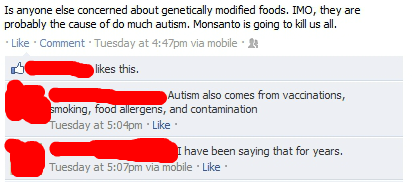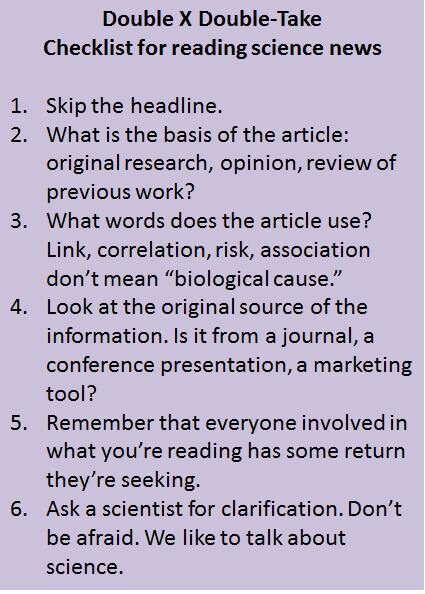Jessica Severson theseversons.net Part one surveys the first part of the sequence of events by which research turns into pseudoscience, and “truth fades away in favor of headlines and pageviews and gossip.” Onward. Part Five: News Articles This is a process. First research, then op-ed, then press release and finally news articles. So what’s the headline of our news article? Top 10 Chemicals Most Likely to Cause Autism and Learning Disabilities. Guilty of serious fear mongering, no? A more accurate title may be: Researchers propose list of chemicals potentially tied to neurological development for further study. But I doubt anyone’s going to write that. The article itself, to be fair, is full of caveats. The reasons for the increase in autism are “controversial.” There is a “gap in the science.” But then you get a sentence like this: But clearly, there is more to the story than simply genetics, as…
Tag: news
Jessica Severson theseversons.net I am putting my foot down. As the parent of an autistic child I hear a lot about vaccines and about half a million other things that people think cause autism. I’m hyperaware of the attention autism gets in the media. So I know about the CDC’s new stats on autism rates. I know about the debate on whether the increase in autism is due to more awareness and diagnosis or more actual occurrences. (Personally, I find the former to be a serious factor, though who’s to say how much.) And I see all the articles that come out week after week about the millions of things that are linked to autism. There’s a recurring problem here. Valuable research is done. Research is disseminated. Information is reported. Articles are read. Findings are spread. And what starts in a lab ends up in a Facebook status. What starts…
Emily Willingham doublexscience.blogspot.com www.ThinkingAutismGuide.com Handy short-form version. [image: Light purple vertical rectangle, with black text reading: Double X Double-Take Checklist for reading science news 1. Skip the headline. 2. What is the basis of the article: original research, opinion, review of previous work? 3. What words does the article use? Link, correlation, risk, association don’t mean “biological cause” 4. Look at the original source of the information. Is it from a journal, a conference presentation, a marketing tool? 5. Remember that everyone involved in what you’re reading has some return on what they’re seeking. 6. Ask a scientist for clarification. Don’t be afraid. We like to talk about science.] You’ve probably seen a lot of headlines lately about autism and various behaviors, ways of being, or “toxins” that, the headlines tell you, are “linked” to it. Maybe you’re considering having a child and are mentally tallying up the various risk factors…

